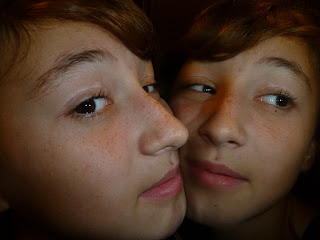The skills necessary to do well at this we try to grab somehow, and most of us rapidly see we need to structure classes and activities very differently from how we might go about teaching out adult students. We fluff and flounder a bit, and even when we do somehow manage GOOD classes, we come out WAY more exhausted and bewildered by it all than we might teaching adults.
Last year I was fortunate to attend a small workshop on using storytelling to teach children EFL with Pan Macmillan author Angela Llanas. Angela originally trained in theatre, and her workshop was an absolute treat, most entertaining, and also full of highly useful ideas.
A quick summary of some important points I picked up
- "Relax and they'll have fun. Make them love you and they'll learn". Think about it as play and fun, not study and work.
- PARTICIPATION is the key: if they're not engaged with the langugage, they're NOT learning
- We can't expect kids to TALK ABOUT things as we might expect adults. They need a lot of structure and frameworking.
- CHORAL REPTITION, and much REPETITION in general, is GREAT for KIDS
- Use strongly structured stories, the details of which you and they can embellish. CHORAL STORIES are GREAT. (If you think about it, even first language stories for kids are like this, with variations on the same situations and structures over and over)
- Use lots of sound effects, visuals and guessing.
- First you can have the kids provide sound effects for the story you tell, then YOU make the sound effects and THEY tell the story
- Use "CLASSROOM friends" to stimulate communication: puppets, dolls and visuals. Children are not very likely to speak to each other or even you in the foreign language when a first language is available, but they respond delightfully to puppets and such if they're told these speak only the Foreign Language.
- Teach in BLOCKS, employ frequent changes of mood and activity.
- We can concentrate and be fully engaged by an activity roughly for the AGE that we are. eg, a 2 year old concentrates for 2 minutes, an 8 year old for 8 minutes, a 12 year old for 12. after that they need a CHANGE of activity.
- Up to around 20 years old, which is roughly the MAXIMUM time of MAXIMUM engagement in any one activity. after that, our attention tends to waver sna needs some kind of pick-up.
IF you have any other tips, I would be delighted if you would share them!
